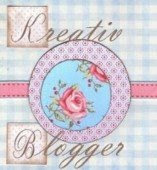Though the practice of gift giving has a long Christmas history, those gifts being presented in colorful paper and tied up in curls of ribbon is a relatively new practice. While Christmas cards began to be sent in the mid-nineteenth century it wasn't until many years later that dressing up presents in Christmas finery caught on.
Holiday gift giving began long before Christmas. The Romans would give gifts to one another on pagan festivals like Saturnalia, the winter solstice, and the Roman New Year. The tradition of gift giving became associated with Christmas because of the offerings of the Three Wise Men, though early on the Church discouraged the practice of gift giving because of its pagan associations. But by the Middle Ages the tradition had become so popular that it became a mainstay of the holiday season.
Early on gifts were wrapped in simple tissue paper or more sturdy brown paper. In the nineteenth century, gifts were sometimes presented in decorated cornucopias or paper baskets. The technology did not exist to mass produce a decorated, foldable, paper until the 1890's, when developments in printing presses allowed colored ink to be printed fluidly on stiffer papers. A rotary system developed that allowed the printed paper to be rolled onto cardboard rolls or cut into smaller sheets. The printed gift wrap industry took off at the turn of the century. Hy-Sill Manufacturing Inc., founded by Eli Hyman and Morris Silverman, became the first American gift wrap company in 1903. Wrapping paper's biggest name, Hallmark, stumbled upon the gift wrap market by accident. In 1917, the Hall Brothers's typical offering of green, red, and white tissue paper had sold out in their Kansas City, Missouri store a few days before Christmas. The resourceful owner, Rollie Hall, had sheets of decorative envelope liners shipped over from a manufacturing plant. He placed these large patterned sheets on top of a showcase and sold them for 10 cents each. The decorative paper quickly sold out. The next year, the sheets sold for three for 25 cents, and again they quickly disappeared. The brothers began printing their own Christmas wrapping paper, and soon gift wrap sales rivaled their greeting card department.
Early gift wrappers had to be especially dexterous; scotch tape wasn't invented until 1930! And it wasn't until 1932 that the rolls of adhesive tape were sold in dispensers with cutter blades. Before then packages were tied up with string and sealing wax. In the 20's and 30's small sticky circles were sold in packets along with folded papers that allowed the wrapper to attach the paper. During this time also, small gift tags and a type of sticky decorative ribbon were developed, often included in packets of matching wrapping paper.
Over the years the look of wrapping paper changed as well. The first wrapping paper was decorated in the ornate style of the Victorian era, similar to the Christmas greeting cards that had become all the rage. Gilded flourishes of cherubs, birds, and flowers draped across sheets of popular wrapping papers. In the 30's and 40's, patterns became more stylized due to the popularity of Art Deco. Decorations moved away from nature to symbols we commonly associate with Christmas today. Popular patterns included ice skaters, snowflakes, Christmas trees, and candles. While the symbols remained the same, the artwork became more realistic again in the 50's and 60's. By the 70's and 80's, Madison Avenue had realized the potential of wrapping paper and hence, wrapping paper often had movie or TV show tie-ins, with designs incorporating popular movie or cartoon characters.
Gift wrap was saved from the rationing that many other products were subject to during World War II. The War Office believed that gift wrap and other Christmas traditions contributed to raising morale amongst citizens, and also believed that it encouraged people to send packages to soldiers far from home. Some gift wrap manufacturers turned to weapon and other wartime production, but the ones that remained making paper saw business boom. Sales actually increased by more than twenty percent during the war!
Innovations with gift wrap have continued. The 1980's introduced decorative plastic and paper gift bags, though these "new" bags weren't as new as some people thought. The Victorians had often given their gifts in decorated bags. The introduction of stick-on bows and cascade ribbons in the 80's and 90's further helped less than perfect gift wrappers.
By Mac Carey
Sunday, September 6, 2009
Subscribe to:
Post Comments (Atom)









3 comments:
I found you on Blogger Follower on Living in Style- I must tell you, I love your blog and am a new follower! I love Christmas! When I lived in FL, up to 8 mos. ago, I live 15 miles from Christmas, FL- I sooo wanted to live in that city, it just wasn't feasable with my husband's commute to work!
Tracy, its so good to meet another follower and Christmas fanatic.
I'm a Christmas fanatic too - my job involves thinking about Christmas all year round - what a lucky person I am! Nice to meet both of you!
Lisa
www.officechristmas.co.uk
Post a Comment